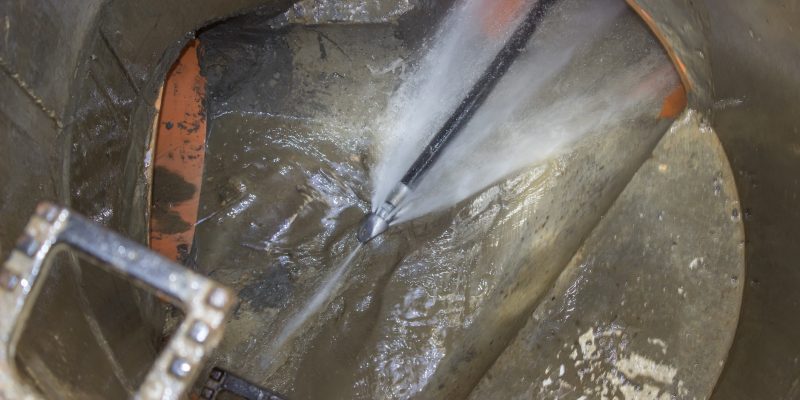Septic Tank Pumping
A septic tank is a vital part of a household’s sewage system. It requires regular maintenance, including pumping and inspection, to prevent problems such as blockages and overflowing tanks. The average household septic system should be inspected at least once every three years by a professional septic service technician. The best time to have your tank pumped is before the level drops below the sludge removal line and the toilet stops flushing properly.
Septic Tank Pumping Process
- Initial Assessment: Determine the current state of the septic tank and measure sludge levels.
- Pumping: Use specialized equipment to pump out the waste material.
- Inspection: Check for cracks, leaks, and other potential issues.
- Recommendations: Provide guidelines for regular maintenance and future inspections.
- Disposal: Ensure the waste is disposed of according to local regulations.


Grease Trap Pumping
A clogged grease trap can cause you to experience sewer backups and overflowing drains. Have your trap cleaned regularly to prevent these issues from occurring. Experienced technicians will be able to correctly identify where the blockage is occurring, what type of material is causing it and how best to remove it.
The frequency of your grease pump out is determined by your local vendor’s grease trap service and will vary depending on the size of your trap, how much grease is accumulated in the tank and how often they last cleaned. Generally, cities require to pump out their grease traps frequently enough to maintain less than 25 percent FOG accumulation. Often this results in cleaning at least once per quarter and sometimes as frequently as once a month. We can help you determine your cleaning frequency after inspecting your grease trap and establish a grease trap maintenance schedule for you.
Grease Trap Cleaning Process
- Inspection: Check the grease level and overall condition of the trap.
- Draining: Remove the water from the trap.
- Cleaning: Scrape away the solidified grease and remove any debris.
- Hydro Jetting: Use high-pressure water to clear out any remaining grease or blockages.
- Reassembly and Testing: Reassemble the trap and test to ensure proper flow.
PIPE JETTING / DRAIN CLEANING
Hydro Jetting uses high-pressure water to push blockages through your sewer and drain pipes to unclog the lines. It can remove grease, sludge, tree roots, and other obstructions. Hydro jetting is also used to remove blockages in commercial drainage lines that have become clogged by debris such as sand or mud. Hydro jetting does not use chemicals but can damage or break weak and old pipes so we do a CCTV video inspection prior to starting any work. If your drainage pipe is collapsed they will need to replace it instead of hydro jetting it because no amount of water pressure could fix that problem.
Drain Cleaning also uses high-pressure water. The cleaning nozzle utilized sprays and scrubs the walls of your sewer or drain pipes. This process removes residue on the inside walls of your pipes, getting rid of the build-up in your sewer and drain pipe systems that develop over time.
Pipe Jetting Process
- Video Inspection: Use CCTV to identify the location and nature of the blockage.
- Hydro Jetting: Employ high-pressure water to clear blockages and clean the pipe’s interior.
- Debris Removal: Ensure all dislodged debris is removed from the system.
- Final Inspection: Re-inspect the pipes to ensure they are clear and functional.
- Maintenance Tips: Provide guidelines to prevent future blockages.


DEGREASING LINES
Drain maintenance is a crucial part of keeping your kitchen operating efficiently and clean. We offer certified plumbing services that include cleaning, degreasing and pipe water jetting. Call us today to schedule an appointment or learn more about our service plan options!
Degreasing Lines Process
- Assessment: Determine the extent of grease buildup in the lines.
- Application of Degreasing Agents: Apply specialized agents to break down the grease.
- High-Pressure Cleaning: Use water jetting to remove the broken-down grease and clean the lines.
- Inspection: Ensure all grease has been removed and the lines are clear.
- Regular Maintenance Schedule: Set up a schedule for regular degreasing to prevent future buildups.
